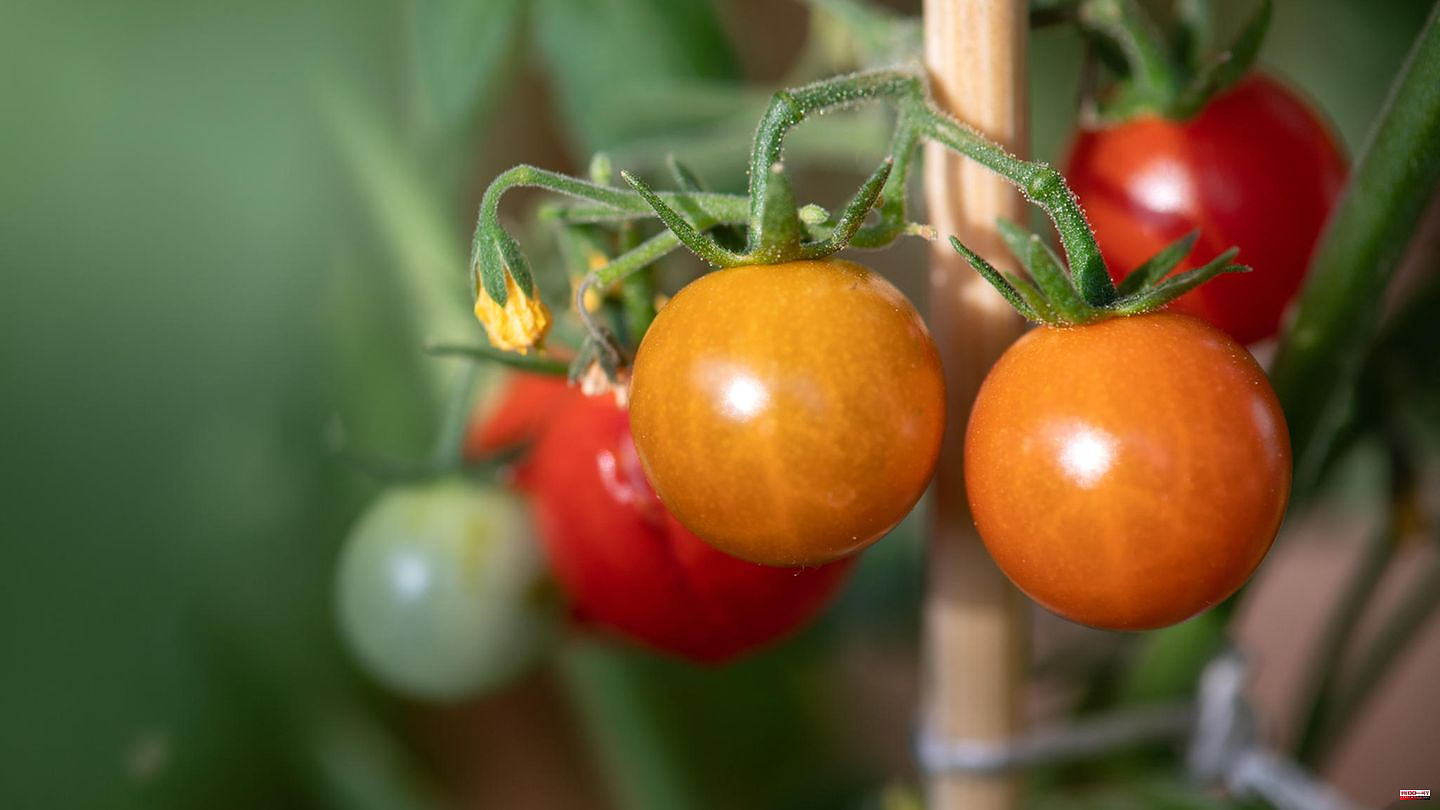They are called “Harzfeuer”, “Moneymaker”, “Red Zebra” or “Deutscher Fleiß” – tomatoes are not only one of the most popular vegetables among Germans. They also have imaginative names, are incredibly diverse and very healthy. Experts believe there are more than 10,000 varieties of the frugal nightshade plant around the world. And the best thing is: the low-calorie vitamin C bombs can easily be grown and raised on the balcony or in your own garden. It's not just fun - the fruits from our own harvest also taste tastier than imported goods from abroad ripened in the greenhouse.
Here we explain how, with a little patience, the right timing, a few seeds and a bit of luck, you don't have to buy tomatoes in the supermarket this year.
Admittedly, buying tomatoes at the weekly market or in the supermarket is much more convenient than taking them from the tiny seed to the ripe fruit yourself. And it's better to start sooner rather than later. Because tomatoes have to be started early - unless you decide to buy pre-grown young plants from a garden center.
The three most important tips for growing tomatoes
As a rule, after eight to ten days, the first seedlings fight their way through the soil into the sunlight. To prevent them from dying or hindering each other's growth, the tomatoes should be pricked out after about three weeks, i.e. distributed into individual plant pots. Because they are very sensitive to cold, the tomato plants have to stay in the apartment or in a small greenhouse on the balcony for a few weeks afterwards. They do not need fertilizer during this time. To do this, they should continue to be watered regularly. Trick: a short dry period immediately before sowing gives root growth an additional boost. There is a complete package with 12 varieties for balconies and beds.
Tip: Experts recommend using bush tomatoes (e.g. “Miniboy”) for the balcony. They grow compactly and rather low and are considered extremely productive.
The young tomato plants are not allowed outside until mid-May at the earliest - more precisely after the Ice Saints, which, according to an old farmer's rule, bring cold polar air and repeated ground frost to Central Europe in the approaching summer. In 2024, Petrus has scheduled the Ice Saints in Germany again for May 11th to 15th. If the plants are already outdoors, the cultivation could have been in vain. By the way, in 2022 and 2023 the Ice Saints avoided Germany. But you shouldn't rely on it.
Tomatoes are so-called heavy feeders. They remove a lot of nutrients from the soil. These must be regularly supplied to the plants outdoors in the form of fertilizer - ideally organic. When using ready-made fertilizers from the garden center, you should pay close attention to the dosage and take the soil in your own garden into account. Sandy soils require significantly more additional fertilizer than, for example, clayey soils. Professionals enrich their tomato beds with ripe compost in the fall, creating a perfect base for the plants that go into the ground in mid-May. The seedlings should be planted so deep into the soil that the top edge of the pot ball is covered with approximately five centimeters of soil. The ideal distance between plants is 50 to 60 centimeters. They then need to be watered vigorously. There is the right soil for your tomatoes here.
Important: Tomatoes should be planted in a fresh bed every year. Why? Because soil pests multiply rapidly when plants are in the same place every year.
Herbs such as basil (here you can find a seed set for your herb garden), carrots, radishes, spinach, garlic, lettuce and celery are easy-care and popular neighbours. Experts believe that the spicy smell of tomato leaves is supposed to drive away pests. Potatoes, peas and fennel, on the other hand, should definitely be kept away from tomatoes.
A green thumb, a lot of love and a few little tricks. That's all you need for a rich tomato harvest. As soon as the plants have formed flowers, they should be supplied with tomato fertilizer every two weeks if possible. Basically, it is important that the plants do not get too big. As a rule, no more than five to seven inflorescences ripen per plant. Excessive, so-called stingy instincts, can be cut or broken out without hesitation. The leaves below the first fruit cluster are also superfluous and deprive the lower fruits of sunlight.
Tip: Apart from bush tomatoes, all tomato plants need a so-called climbing aid. The spiral rods should be inserted into the ground when planting outdoors. The main shoot is constantly twisted through the coils to fix the plant.
Depending on the variety, the first outdoor/garden tomatoes are ready for harvest by the end of July at the latest, i.e. around four months after they have been grown on the windowsill at home. We wish you "bon appetit!"
Sources: Plantura; ndr.de; mein-schoener-garten.de
Transparency note: This article was first published in April 2020.
This article contains so-called affiliate links. Further information are available here.












